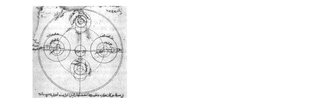Interferences between Theology and the Sciences in the Formation and Diffusion of early Islamic cosmological Models

This project is a long-term research endeavor whose chief aim is to shed light on the sources, structure, function, and meaning of early Islamic cosmology, by explaining how the various late-antique traditions that contributed to its development intertwined and were transformed as a result of the dialectic between theology and the sciences in the early Islamic context. One of its priorities is to identify patterns of conflict or symbiosis that developed between the traditional cosmology (as reflected in the QurÂ’an, ḥadīth, and early Arabic theological works) and the Ptolemaic worldview, which gradually became the paramount model in Islamic intellectual history. On the one hand, the research will establish a typology of Islamic cosmological models on the basis of their structural characteristics and attempt to relate these models to ancient cosmological traditions. In this connection, it will examine the patterns of continuity and rupture that characterized this process of transformation and will also address theoretical questions such as: what are the new features which cosmology acquired in an Islamic context, and are these features unique to Islamic cosmology? On the other hand, the research project also intends to study some of the religious, social, and methodological implications that this shift entailed on the basis of two main perspectives: First, by analyzing the symbolic and semantic function of cosmology in early Islamic society through an examination of certain key issues such as the relation between cosmology and religious practice, politics, theories of salvation, and epistemology. The aim is to understand the role that cosmology played in the social and religious life of early Muslims (e.g., how did they interpret eclipses and what religious meaning did they attribute to these phenomena?). Second, the project will study the approach and methodology adopted by early Arabic thinkers engaged in cosmological reflection and the contribution of the various disciplines used their works. How did myth and theology on the one hand and sciences such as physics, astronomy, and metaphysics on the other shape cosmological reflection? How are the theological premises, and especially the theocentric premises, underlying the works of medieval theologians and philosophers reconciled or in conflict with the scientific methodology of disciplines such as mathematical astronomy?
By virtue of its subject, the project inscribes itself in the recent upsurge of interest for ancient and medieval cosmology (see, among others, Taub 1993, Grant 1994, Lerner 1996, Rudavsky 2000, Clay 2003, Betegh 2004, Obrist 2004, Wilberding 2006, Eastwood 2007, and Yusuf 2008). The project overlaps on both section 1 (consolidation, formation) and section 2 (spread, diffusion) of the IKGF Consortium’s flowchart and embraces several of its defining themes and notions, especially ‘notion of religion’ and ‘attractiveness.’ It is by nature intercultural and bridges the late-antique Greek, Christian, Persian, Mesopotamian, and Indian worlds, all of which had an impact on the development of Islamic cosmology and the various disciplines associated with it. The conclusions and results of this research project should contribute to a better understanding of the consolidation of Islamic cosmology and of its role in the formation of an Islamic religious identity, as well as of the dialectic between revelation and reason and science and tradition.

